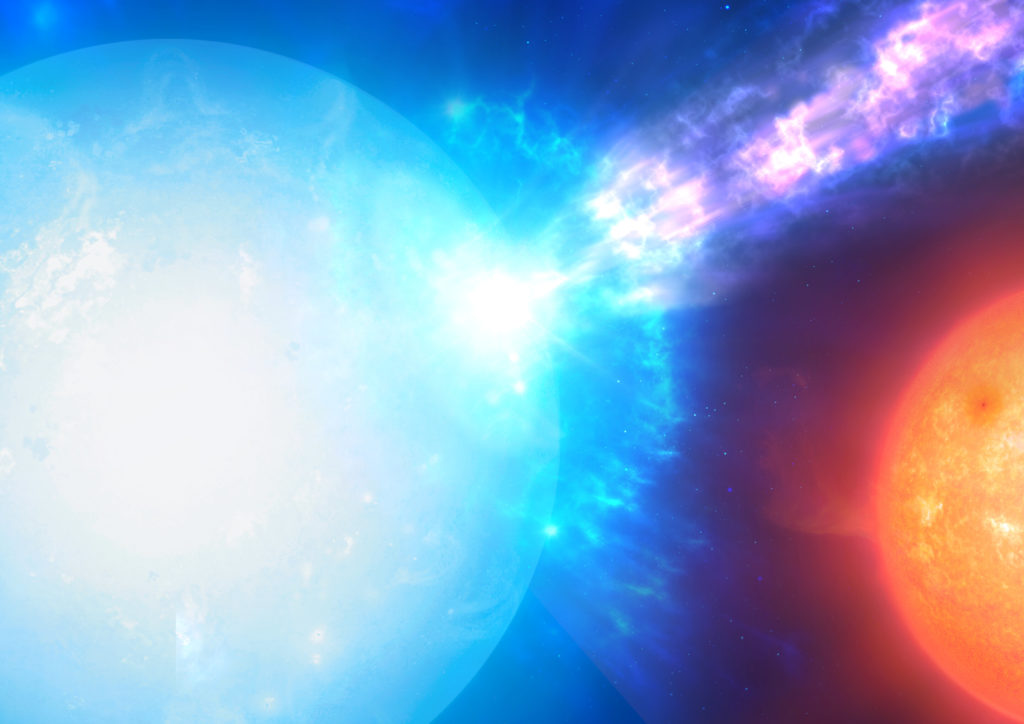A team of astronomers using the European Southern Observatory's Very Large Telescope (ESO VLT) observed a new
“We have discovered and identified for the first time thatwe call it a micronova,” explains Simone Scaringi, an astronomer at Durham University in the UK who led the study published today in the journal Nature. “This phenomenon challenges our understanding of how thermonuclear explosions occur in stars.”
Microwaves are extremely powerful phenomena, but theysmall on an astronomical scale; they are much less energetic than supernovae. Both types of explosions are associated with white dwarfs, dead stars. Their mass is comparable to that of the sun, but they are about the size of Earth.
A white dwarf in a two-star system maysteal material, mostly hydrogen, from its companion star if they are close enough to each other. When this gas falls onto the very hot surface of the white dwarf, it causes the explosive fusion of hydrogen atoms into helium. In supernovae, these thermonuclear explosions occur across the entire stellar surface. “Such explosions cause the entire surface of the white dwarf to burn brightly and glow for several weeks,” explains study co-author Nathalie Degenaar, an astronomer at the University of Amsterdam in the Netherlands.
 An artist's impression of a micronova explosion in a binary star system.
An artist's impression of a micronova explosion in a binary star system.
Credit: Mark Garlick/Durham University
Micron explosions are similar explosions, but smallerscale and faster, they last only a few hours. They are found on some white dwarfs with strong magnetic fields that direct material toward the magnetic poles of the star. “For the first time, we saw that hydrogen synthesis can also occur locally. Fusion only occurs at the magnetic poles,” explains Paul Groot, an astronomer at Radboud University in the Netherlands and co-author of the study.
“This leads to the explosion of thermonuclear bombs,the power of which is about one millionth the force of a nova explosion, hence the name “micron”,” the scientist concludes. While "micro" may mean that these events are small, it's worth considering that just one of these explosions could burn about 20,000,000 trillion kilograms of material, or about 3.5 billion of the Great Pyramids of Giza.
Read more
Is the standard model of physics no longer relevant? The main thing about the new work of scientists at the collider
Scientists 'resurrect' an ancient enzyme to feed 9 billion people by 2050
Found traces of the strongest earthquake in the history of mankind